Class struggle in Iran—strikes, sit-ins, protests, and social uprisings—has intensified the last few years, from the December 2017 nationwide uprising, to the three-month-long mass strikes in Khuzestan in 2018, and the November 2019 nationwide uprising. The research of worker activists suggests that labor unrest has increased dramatically over the past decade. Compare the 365 instances of strikes, sit-ins, work stoppages, and protests by workers in 2014 to the, at minimum, 1300 such instances in 2019-20201. Workers’ demands began as strictly economic, with calls for payment of past wages, wage increases, and support for fired workers. Over the course of struggle, however, workers have become more political, opposing the privatization of factories, mines, and educational services, and demanding the creation of independent institutions such as unions and showra (workers’ councils).
The feature of both street demonstrations and strikes has been the influence of the experience of the unfinished revolution of 1979. It is an experience that, through the word of mouth from parents to their children, from worker to worker, through the writings of radical thinkers, pictures, and internet stories, has been transferred generation to generation. The memory of 1979 manifested itself in the uprisings of 2017 and 2019, and it has been a constant source of inspiration for labor movement activists in their attempt at forming workers’ councils.
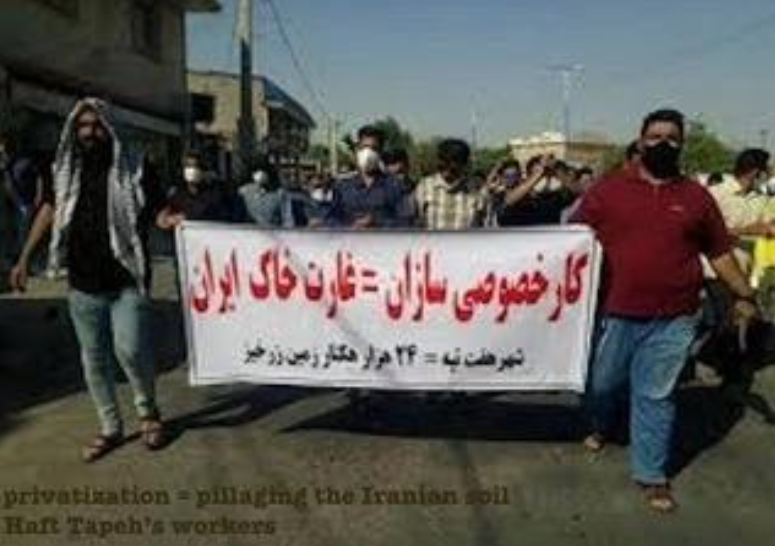
The lived experience of marginalized workers in the revolution of 1979
In 1979, marginalized workers, those pushed to margins economically, geographically, legally—in contrast with formal workers—were the main force in the streets and behind Khomeini, the founder of the Islamic Republic and its first Supreme Leader. They were and remain the most vulnerable workers; they live as squatters or in slums, and are self-employed or work for small, illegal workshops or companies. The dispersed quality of such working and living conditions does not make them conducive to traditional forms of labor organizing and collective action. These workers, both in 1979 and today, have been the foot soldiers of class struggle at the heart of social uprisings and street protests. Sociologist Asef Bayat calls them disenfranchised workers and estimates that they constitute around 80 percent of all workers in Iran. In their recent uprisings we can discern patterns repeated from 1979. Although the 2019 uprising began in opposition to a rise in gasoline prices, it was immediately politicized, demanding the overthrow of the regime. People chanted “death to Khamenei [the living supreme leader]” and “abandon Syria—think about us,” They burned banks, governmental buildings, and posters of Khomeini, and they looted grocery stores.
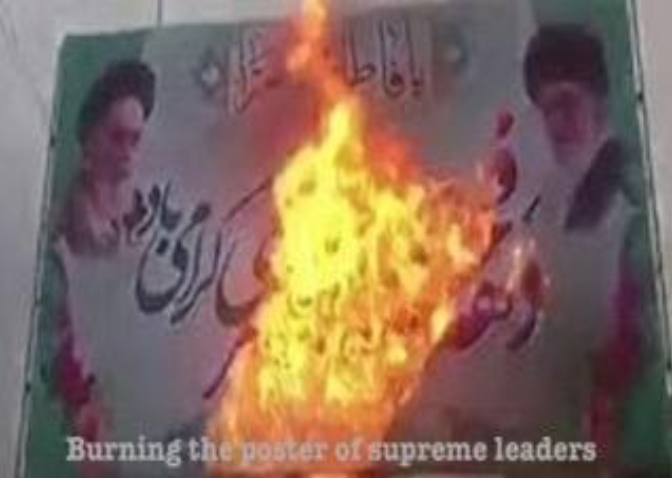
The lived experience of workers’ councils in the revolution of 1979
The formal workers of Iran who remained silent for most of 1978 ensured the downfall of the monarchy with widespread strikes through the final months of that year and into the beginning of 1979. In many factories, particularly in the oil industry, where ownership had fled the country, secret strike committees, with the help of revolutionary communists, were transformed into workers’ councils that took control of production and distribution. Workers’ councils alongside neighborhood councils controlled by leftists became a problem for the consolidation of the new regime. Workers, however, were under the influence of Khomeini’s charisma. They were not looking to gain power, and were easily coopted or suppressed within a couple years. Thousands of militant workers were arrested and more than five hundred were executed. Thousands of socialists and communists were executed, many had to flee the country, and many others were banished. Ultimately, Komiteh (Islamic committees) and Anjoman-i Islami (Islamic associations) closely tied to national secret services replaced neighborhood and workers’ councils respectively. Workers’ councils that had played a crucial role in the victory of the revolution were crushed. The experience of those years, however, and of workers’ councils as the apex of the labor movement remained and became the subject of discussion.
Workers’ protests that were a key feature of the 1979 struggles in the formal manufacturing and services sectors—strikes, gatherings, and sit-downs—re-emerged in the 2010s, developing into regional worker uprisings in some cases. Despite prohibition of independent working class institutions, including unions, (called syndicates in Iran), waves of protests began in the late 1990s with the formation of a painters’ syndicate led by the communist painter Shahrokh Zamani. Ironically, collective bargaining is allowed under articles 139-146 of the labor law, however, it is never put in practice since syndicates are illegal. Islamic councils or Islamic associations are the only legally existing workers’ institutions, but they are directly controlled by the government and they do not attempt to bargain on behalf of the workers. Consequently, over the past two decades, in the face of rising prices, decreasing or simply non-payment of wages, arbitrary arrests, and privatization, workers have been forming independent, illegal syndicates to collectively bargain with their employers. For example, Reza Shahabi and the Tehran bus drivers of United Bus Company formed the Vahed syndicate in 2005. Ali Nejati and the workers of Haft Tapeh Sugarcane Company, after a series of strikes and clashes with the police, formed their syndicate in November 2007. The government has not officially recognized any of these syndicates, has refused their demands, and has imprisoned the representatives of the workers. In order to instill fear in the workers, the government arrested and killed Shahrokh Zamani in February 2016. His murder did not have the desired effect—workers continued their protests. Across the country they went on strikes to demand past wages, wage increases, better working conditions and permission to form new syndicates.
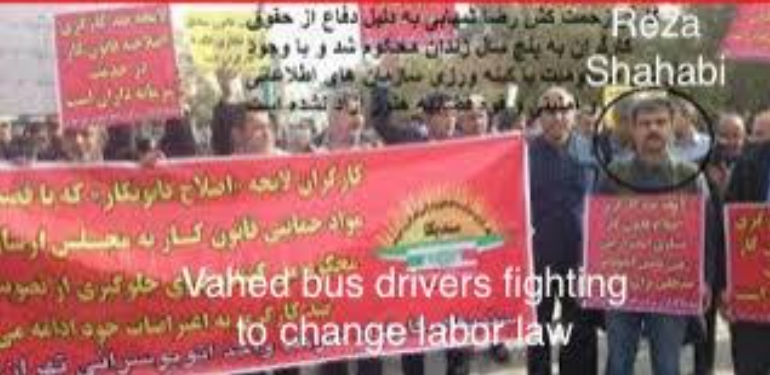
As most state owned factories became unprofitable over the past decades, they were sold to government officials or to their relatives at a fraction of actual value. The new owners, most of whom are affiliated with the Islamic Revolutionary Guard Corps, took loans based on the actual value of their new companies and either offshored the money or used it privately. Consequently, most factories are on the verge of collapse while the owners, having already profited handsomely, have no interest in maintaining them. The situation is similar to 1979, when most owners have already fled the country, it is workers who are concerned with maintaining the flow of production and keeping factories open. Considering the bankruptcy of many of these large, recently privatized factories, some of the unrest has been channeled to oppose privatization. Over the past two years, workers have raised the demand to take back their factories from private owners and bring them under their own control. The ideas of workers’ control and council management have resurfaced in the absence of a revolutionary movement, and while the state repressive apparatus is intact and is used to violently suppress workers at every turn. Nevertheless, workers’ councils are the most memorable relics of the 1979 revolution. They represent the inevitable and undeniable anti-capitalist and revolutionary potentials of the Iranian labor movement.
The Haft Tapeh Sugarcane factory in the city of Shush is known as the fortress of labor resistance today. During a November 2018 march of thousands of workers—an episode in a three-month-long strike—Esmaeil Bakhshi, the popular leader of the workers, advocated for the management of the factory under the supervision of independent workers’ councils:
The orders have always been from the top, today we have decided to dictate rules from below. We assign tasks to the government … we act collectively and as a council … individualists, nationalists, racists and reactionaries have no place amongst us. Our alternative are workers’ councils. This means that we make collective decisions for our own destiny. We issue verdicts from below. We have experienced enough suppression …
Thousands of workers shouted in support of these ideas and affirmed their collective power with clenched fists. The formation of a syndicate and then, after a series of strikes, an independent workers’ council in Haft Tapeh in 2018 was not simply a labor uprising. It was an inflection point in the very mode of workers’ struggle and organization. It unleashed a hidden potential that both pushed the labor movement into the broader political movement and inspired it to resurrect the council experience of the 1979 revolution. Their proposal for workers’ self-management results from the failure of attempted private and governmental capitalist solutions to the deepening economic crisis. It is a crisis arising not just from sanctions, but from the very nature of class relations and economic development in Iran over the past few decades.
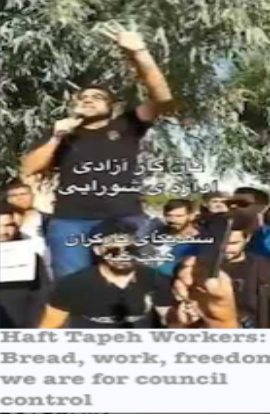
We believe that a workers’ council is an institution fighting for revolutionary power, however, councils are too few today with highly localized struggles, and they are not yet capable of challenging state power. Indeed, contemporary workers’ councils in Iran, similar to those of the 1979 revolution, resemble the Russian factory committees of 1917 far more than the Russian soviets (workers’ councils). Unlike Russian soviets that were fundamentally political institutions challenging state power, Iranian showra are economic institutions concerned with the immediate process of production. Still, by returning to the experience of the 1979 revolution in the ongoing struggle to maintain production, an ideal is taking roots in the minds of the workers that will not so easily be uprooted. It is this forty-year-old tradition that led the independent student council to rise in defense of the workers in 2018. The students declared: “Dear Workers, loyal to the tradition of which we speak today, we call on all of the oppressed to come together for a united resistance in the name of the councils.” Women students marched in the front with workers, holding signs that read: “We are the children of workers, we will stand by them.” The tradition that the students called upon has been present in the strikes and marches of thousands of Ahvaz steel workers and Haft Tapeh sugarcane workers shouting: “bread, work, freedom, council control.” Although the uprising in Haft Tapeh, and the image of families, students and retirees joining the marching workers, has become the symbol of labor militancy, the movement is developing across the country. It is also not limited to manufacturing workers. For example, teachers have been at the front of the syndicate movement. They published a statement in 2018 claiming that the only way to rescue the national education system—which has recently been privatized—is by worker control through workers’ councils. Since the 2018 strikes, the demand for worker control has been at the center of discussion not only in leftist journals, but amongst the workers themselves. The voices of marginalized workers could be heard negating the present and demanding the overthrow of the regime amid the fire and blood on the streets in November 2019. And the voices of organized labor, reflecting the presence of a growing socialist consciousness, are providing a positive alternative with the ideal of workers’ control.
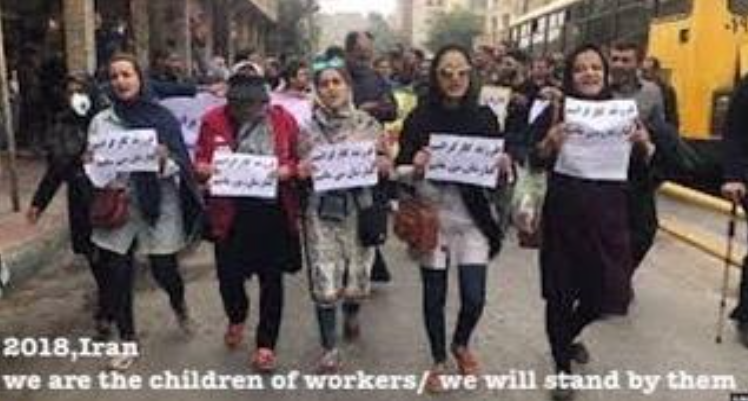
The struggles of Haft Tapeh workers to oppose privatization and achieve workers’ control, or at least state control with workers’ self-management, continues to this day. Most recently, a series of strikes forced an investigation into the fraudulent practices of their employer—who was using state funds for his own enrichment instead of investing in the company—resulting in his prosecution. The official statement of the workers published in October 2020 declared:
members of parliament, under the pressure of strikes and workers’ protests, agreed to meet with the representatives of workers to discuss their demands and the ongoing crisis at the Haft Tapeh sugar cane company. After a long process of negotiations, the government finally removed the employer and fired some of the retired managers supported by the said employer. Long live the union, long live the general workers’ strike.
If the socialist ideal of council control was embryonic during the 1979 revolution, it has matured over the past decade within the Iranian labor movement, opening up the perspective of council power throughout the region. Considering the significance of feminism and movements of national minorities—in particular, the history of neighborhood councils in Kurdish regions in 1979—we also believe that women and national movements will be central to the coming revolution. Kamal Khosravi, a leading Iranian Marxist, argues that the role of the left in this situation is:
not to provide prescriptions for the rescue of capitalism nor to fall into the trap of the so called ‘middle class’ ideologies, it is to recognize, evaluate and institutionalize the anti-capitalist political and institutional capacities and potentialities arising out of the revolutionary movement.
The task is not an easy one. Khosravi points out that the coming revolution:
will have no small enemies. It is in the path for the victory of the revolution that the real anti-imperialist struggle finds its true meaning and makes a mockery of the so-called anti-imperialist character of the Islamic Republic. This revolution, that will open up a window towards the perspective of human emancipation, has no misgivings about the difficult road ahead nor of easy solutions, but it will arrive soon.
This revolution will not succeed on its own national ground, however. Considering the imperialist character of the Iranian regime in the region, it has the potential to act as a catalyst for the ongoing revolutionary process in the region toward a radical, anti-capitalist alternative. The realization of this potential depends on the ability of the international left to recognize its hidden promise, and to connect radical activists from different countries into alliances that can help lead the coming struggles.
Here is a chronology (link in Farsi) of protests in Iran. Readers should note that Iranian New Year is on March 20, therefore, the year 1391 for example, is from March 2012 to March 2013.
1391 (2012-2013): 1200 Safa Rolling & Pipe Mills workers went on a ten-day strike to demand past wages and health insurance in early December.
1392 (2013-2014): 2000 workers at Chadormalu iron ore mine stopped working for three days in December to protest the layoff of Bahram HassaniNejad, the chair of the workers’ syndicate. They began a second wave of strikes on January 28 and, despite the arrest of 28 workers, they continued until the managers agreed to reinstate Bahram on March 6.
1393 (2014-2015): Chadormalu workers struck again on May 18, this time against privatization of the mine. After 40 days, on June 25, the government agreed to revoke the privatization contract and 5000 workers returned to work. On August 19, two representatives of the workers were arrested, resulting in another wave of strikes. After 17 days and many arrests, worker representatives were released, and the government revoked the privatization agreement. The struggle of Chadormalu workers was the first serious and victorious struggle against privatization after the 1979 revolution.
Teachers in 11 provinces and 20 cities began large-scale protests against poverty and their living and working conditions on March 1. The protests continued until April 16 when more than 2000 teachers in Tehran gathered in front of the parliament demanding a 30 percent wage increase and a 22 percent increase in the state education budget.
1394 (2015-2016): There were strikes and protests at 515 workplaces. Some examples include a 54-day strike by Ahvaz railway workers, a 47-day strike at Safa Rolling & Pipe Mills, a 40-day strike by Dorood steel and cast iron workers, and nationwide teachers’ protests on Apri 16, May 7, July 22, and October 8.
1395 (2016-2017): There were 1264 strikes and protests at 653 workplaces. This is a 27% increase compared to the year before. Retirees and vendors also entered the scene of struggle. For example, In April, thousands of retired steel workers and teachers gathered in front of the parliament; In October, hundreds of retired steel workers gathered in front of the labor department while the retired social insurance workers protested in front of the parliament. In September, vendors protested at the Sanandaj mayor’s office, and in March 2016, Hamedan vendors gathered in front of the governor’s building to protest their living and working conditions.
1396 (2017-2018): There were 1251 strikes and protests at 689 workplaces. Although the number of strikes and protests remained similar to the last year, they were more political in their opposition to the ongoing process of privatization of education, healthcare, housing, insurance, and industrial production. This year also saw the first uprising of the marginalized and disenfranchised workers, particularly the young, in over 140 cities in all provinces across the country. Their mottos were, for the first time after the revolution, explicitly against the Islamic republic and the supreme leader.
1397 (2018-2019): There were 1700 labor protests in this year, the highest number since the 1979 revolution. Farsi readers can look at this BBC report. Some notable examples include:
Truck drivers (link in Farsi): On May 22, truck drivers began a 10-day strike in 25 provinces and 160 cities, protesting rising costs. The second wave of protests began on September 23 and spread to 40 provinces and 236 cities. The strikers faced severe repression, 256 drivers were arrested, and some were threatened with execution. However, after 20 days of persistent protest, the government conceded to their main demand and established fare prices based on ton-kilometer.
Teachers (link in Farsi): Teachers continued their strike and, through their national syndicate coordination committee, organized a series of nationwide protests on October 14 and 15, November 13 and 14, and on March 3. They have faced severe repression and many of their leaders have been arrested and tortured in prison. Mohammad Habibi (link in Farsi), a member of Tehran teachers’ syndicate and one of the most popular leaders of the movement, was arrested on May 10 and prosecuted on the August 8. He was charged with crimes against national security and spreading propaganda against the regime, and sentenced to seven-and-one-half years in prison with 74 lashes.
Khuzestan Protests (link in Farsi): Khuzestan has been the center of labor militancy since 1396 with the workers of Haft Tapeh sugarcane company at the forefront. The most significant aspects of these protest have been: demand for a return to state ownership, formation of a workers’ council to supervise production, broad community support from retired workers and students, and coordination of strikes, particularly with Ahvaz steel workers. Many Khuzestan protest leaders, and journalists such as Sepideh Qolian, have been arrested and harshly tortured.
HEPCO Protests: The Heavy Equipment Production Company (HEPCO), located in Arak, is the largest heavy equipment manufacturer in the region with 1,500 employees. The first wave of strikes began in the previous Spring, after the privatization of the company, when workers blocked the north-south railway but had to retreat in the face of special forces. Despite the arrest and torture of many of their leaders, workers resumed their strike a year later in May and have continued on and off ever since.
1398-1399 (2019-2020): Over the past two years strikes and protests have continued to grow despite state repression. Teachers, workers at HEPCO and Haft Tapeh, and, most recently, petrochemical workers across the country, have been at the forefront of these struggles. By some estimates, there were about 6000 protests in 1398, a dramatic increase from previous years. With a deepening economic crisis, spiraling inflation, and the new coronavirus pandemic, these protests are set to intensify.↩︎

